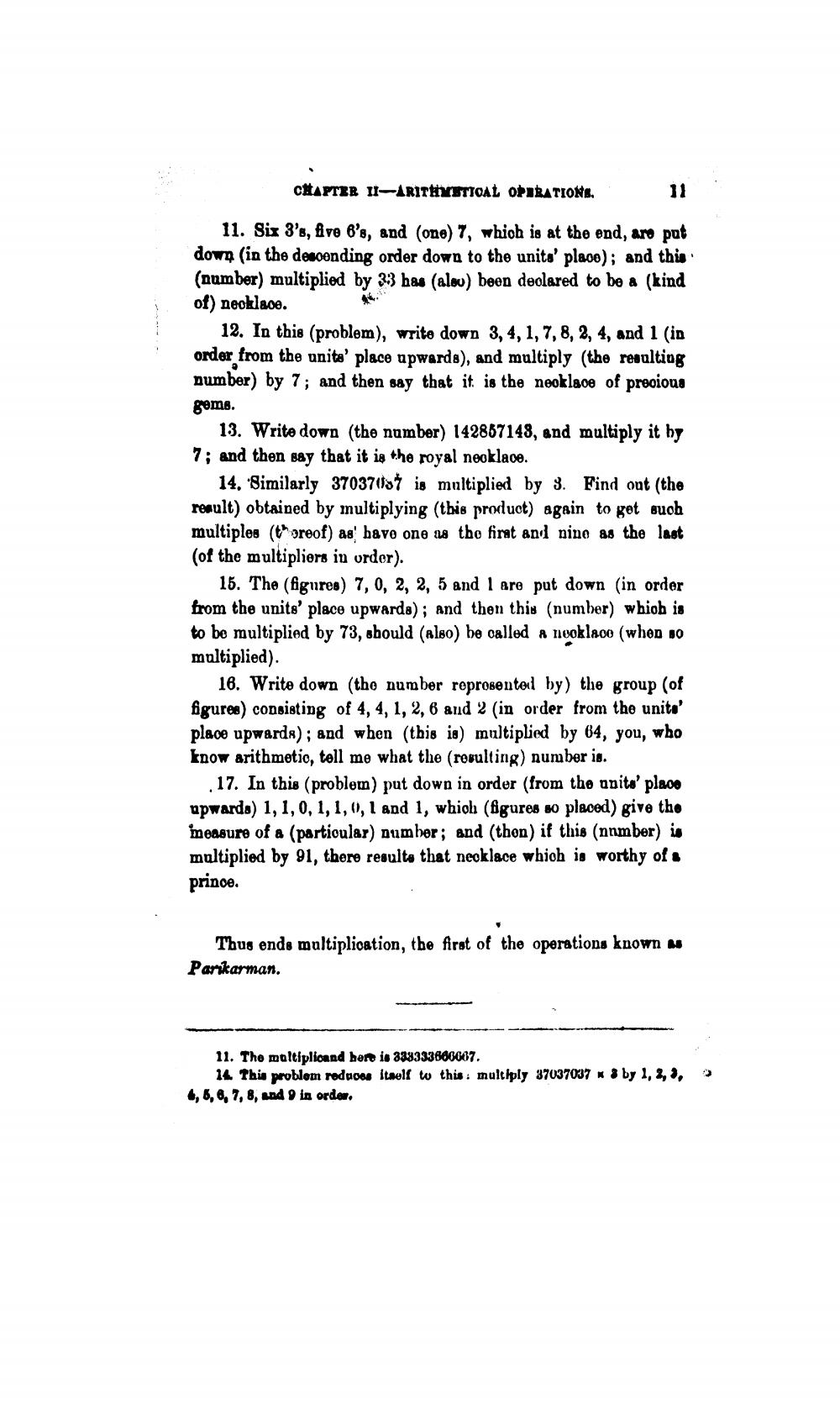________________
CHAPTER II-ARITHYSTTOAL OPERATIONE.
11. Six 3's, five o's, and (one) 7, which is at the end, aro pat down (in the descending order down to the units' placo); and this (number) multiplied by 33 has (alsu) been deolared to be a (kind of) neoklace.
12. In this (problem), write down 3,4, 1, 7, 8, 2, 4, and 1 in order from the units' place upwards), and multiply (the resulting number) by 7; and then say that it is the neoklace of precious gems.
13. Write down (the number) 142867148, and multiply it hy 7; and then say that it is the royal neoklace.
14. Similarly 37037137 is multiplied by 3. Find out the result) obtained by multiplying (this product) again to get such multiples (toreof) as bavo one is the firat and nine as the last (of the multipliers in order).
15. The (figures) 7,0, 2, 2, 5 and I are put down (in order from the units' place upwards); and then this (number) whiob is to be multiplied by 73, should also be called a neoklaco (when 80 multiplied).
16. Write down (the number reprosented by) the group (of figures) consisting of 4, 4, 1, 2, 6 and 2 (in order from the unita' place upwards); and when this is) multiplied by 64, you, who know arithmetio, tell me what the (rosulting) number is.
. 17. In this (problem) put down in order (from the unita' place upwarda) 1,1,0,1,1,0, 1 and 1, which (figures so placed) give the measure of a (partioular) number; and (thon) if this (number) is multiplied by 91, there results that necklace which is worthy of prinoe.
Thus ends multiplication, the first of the operations known as Parikarman.
11. The multiplicand here is 328333886667.
14 This problem rodnoos itaelf to this: multiply 37037037 * 3 by 1, 2, %, 4, 5, 6, 7, 8, and 9 in order




